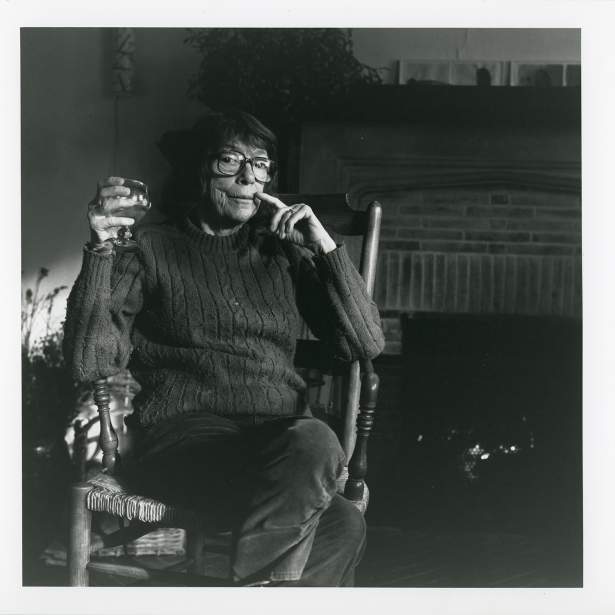


In 2025, the art world pauses to celebrate the centennial of Joan Mitchell’s birth—a monumental occasion that invites not only reflection on a life of remarkable artistic rigor but also a renewed commitment to the future of painters, especially women and abstract artists working across disciplines today. From her birth in Chicago in 1925 to her final works in Vétheuil, France, Mitchell left behind not just canvases but an entire visual lexicon—visceral, luminous, and fiercely independent.
Throughout this landmark year, museums, foundations, and cultural institutions across the globe are engaging in programs, retrospectives, and grants that not only honor Mitchell’s creative legacy but also amplify it as a living force. With a surge in public interest, reaffirmed funding for emerging and mid-career artists, and a renewed critical appraisal of Mitchell’s influence, 2025 has become more than just a centennial—it is a cultural reawakening.
Joan Mitchell in Retrospect: The Arc of an Abstract Pioneer
To understand the significance of 2025’s celebrations, one must first revisit the ferocity of Joan Mitchell’s oeuvre. Unlike many of her Abstract Expressionist contemporaries, Mitchell forged her path with unrelenting independence. While associated with New York’s second-generation Abstract Expressionists, Mitchell resisted stylistic categorization. Her work, often perceived as emotional cartography, navigated loss, landscape, memory, and rage.
Mitchell’s canvases—expansive, atmospheric, deeply physical—were shaped by influences as varied as Van Gogh, Cézanne, and Matisse. But it was her intuitive embrace of motion and gesture that solidified her voice. A painting was, for Mitchell, not a scene but a pulse. She once described her works not as pictures but as “translations of feelings.” Her brushstrokes were muscular and nuanced, at times brutal, at others tender—a dance between chaos and control.
Her early works from the 1950s, such as Hemlock (1956), established her defiant presence. By the 1970s and 1980s, in large-scale masterpieces like La Vie en Rose (1979), Mitchell had mastered a language entirely her own—layered, lyrical, and charged with emotive energy. These paintings do not merely exist; they breathe, bleed, and tremble.
The Centenary Calendar: A Global Celebration
The centennial celebration of Joan Mitchell’s birth is a testament to her enduring relevance. Across 2025, major institutions from Paris to Chicago, New York to Tokyo are hosting commemorative events:
The Joan Mitchell Foundation’s Centennial Initiative
At the heart of the centennial programming is the Joan Mitchell Foundation, long dedicated to the support of contemporary artists. Their 2025 Centennial Initiative includes expanded artist grants, a reimagined residency program in New Orleans, and traveling exhibitions featuring both Mitchell’s works and new commissions by emerging artists in dialogue with her legacy.
Retrospective at the Art Institute of Chicago
Returning to her hometown, the Art Institute of Chicago unveiled “Joan Mitchell: A Century of Gesture,” a landmark retrospective that spans her entire career, including previously unseen studio notes and late-period paintings rarely exhibited outside of France. The exhibition explores Mitchell’s evolution in thematic chapters—from urban anxieties to pastoral abstraction.
“Mitchell & Now” at the Centre Pompidou, Paris
In Paris, the Centre Pompidou has mounted “Mitchell & Now,” a cross-generational exhibition that places Mitchell’s works alongside those of contemporary abstract artists such as Julie Mehretu, Jadé Fadojutimi, and Mark Bradford. The show acts as a visual conversation across time, emphasizing Mitchell’s influence on today’s most innovative practitioners.
Public Art Installations and Community Workshops
In cities like Los Angeles and New Orleans, large-scale murals inspired by Mitchell’s compositions have transformed urban spaces. Simultaneously, educational outreach programs funded through centennial grants bring art supplies and instruction into underserved schools, reflecting Mitchell’s belief in painting as a democratic gesture of self-expression.
Funding and the Future: Mitchell’s Legacy as Catalyst
One of the most powerful effects of the centennial is its direct impact on contemporary artists. The Joan Mitchell Foundation has reaffirmed and expanded its commitment to artist funding during this year. In an art market increasingly shaped by institutions and high-net-worth collectors, individual artists often struggle to secure financial support for experimentation and growth. Mitchell, who herself faced gendered marginalization in her lifetime, would no doubt recognize the urgency of this challenge.
The foundation’s expanded efforts in 2025 include:
- Increased grant awards for painters and sculptors at all stages of career development.
- A permanent residency endowment that secures long-term artist access to the Joan Mitchell Center in New Orleans.
- A new Mitchell Legacy Fellowship, pairing emerging artists with mentors whose practice aligns with Mitchell’s ideals of emotional vulnerability and formal rigor.
- Emergency relief funds allocated to artists facing financial, medical, or climate-related crises.
This initiative not only honors Mitchell’s creative legacy but materializes it. The funding is not ornamental—it is structural, generative, and deeply needed. In many ways, the celebration of her 100th birthday has become a call to action, a way of leveraging memory to protect the future of art.
Joan Mitchell and Living Artists: A Resonant Dialogue
Mitchell’s influence transcends formal technique. It lives in the emotional truth of today’s painting. Artists like Cecily Brown, Rashid Johnson, Mary Weatherford, and Amy Sillman all trace lines of influence back to her insistence on gesture as language, on abstraction as autobiography.
Perhaps most remarkably, Mitchell’s legacy bridges gender and geography. While she was one of the few women in the heavily male-dominated New York art scene, she resisted being tokenized, instead demanding recognition purely for the strength of her work. Today, her trailblazing defiance serves as a blueprint for queer, feminist, and global artists who navigate marginalization through the force of their creative authenticity.
In the 2025 anthology “The Sky Is the Canvas: Artists on Joan Mitchell”, dozens of contemporary painters contribute essays, letters, and artworks inspired by Mitchell. Their testimonies make clear that she is not a figure of the past, but a living collaborator whose work continues to challenge and embolden.
Final Years in Vétheuil: The Poetry of Place
As part of the centennial programming, renewed scholarly attention has returned to Mitchell’s final decades in Vétheuil, where she lived in Monet’s former home overlooking the Seine. There, she produced some of her most lyrical and expansive works—canvases that seemed to shimmer with seasonal light and psychic density.
Paintings such as No Birds (1987–88) and Cypresses (1980) blend the influence of French landscape tradition with a distinctly Mitchellian language—less about place than perception, less about representation than resonance. These works reveal her profound engagement with mortality, loss, and endurance.
In exhibitions and essays alike, curators have stressed that Mitchell’s “late style” is not a winding-down but a deepening. Her brushstroke became more spare, but more intentional. Her colors, bolder. Her sense of space—once combative—more contemplative.
Why Joan Mitchell Matters Now
What does it mean to celebrate a painter 100 years after her birth? For Joan Mitchell, the answer lies not in memorialization but in movement. Her legacy is not fixed in museums—it surges through the practices of working artists, the policies of arts organizations, and the imaginations of those just discovering her work.
In a cultural climate that continues to reckon with equity, representation, and funding in the arts, Mitchell’s centenary year reminds us that creativity is both inheritance and resistance. She reminds us that a painting can be a scream or a song, a wound or a window.
Mitchell painted as if it were survival—because for her, it was. And now, a century later, her work survives not simply in galleries or auction houses but in the hearts and hands of those who find courage in color, gesture, and unrelenting honesty.
Ideologue
The 2025 celebration of Joan Mitchell’s centenary is not just a backward glance; it is a living horizon. Through expanded artist support, public engagement, and rigorous scholarship, the programs and exhibitions surrounding this year ensure that Mitchell’s impact is not merely remembered—it is amplified, perpetuated, and reimagined.
Joan Mitchell once said, “Painting is the opposite of death; it permits one to survive.” In 2025, we do not just remember her—we continue to survive with her. Through every stroke, every grant, every mural, and every painter inspired by her storm of sincerity, Joan Mitchell lives.
No comments yet.








